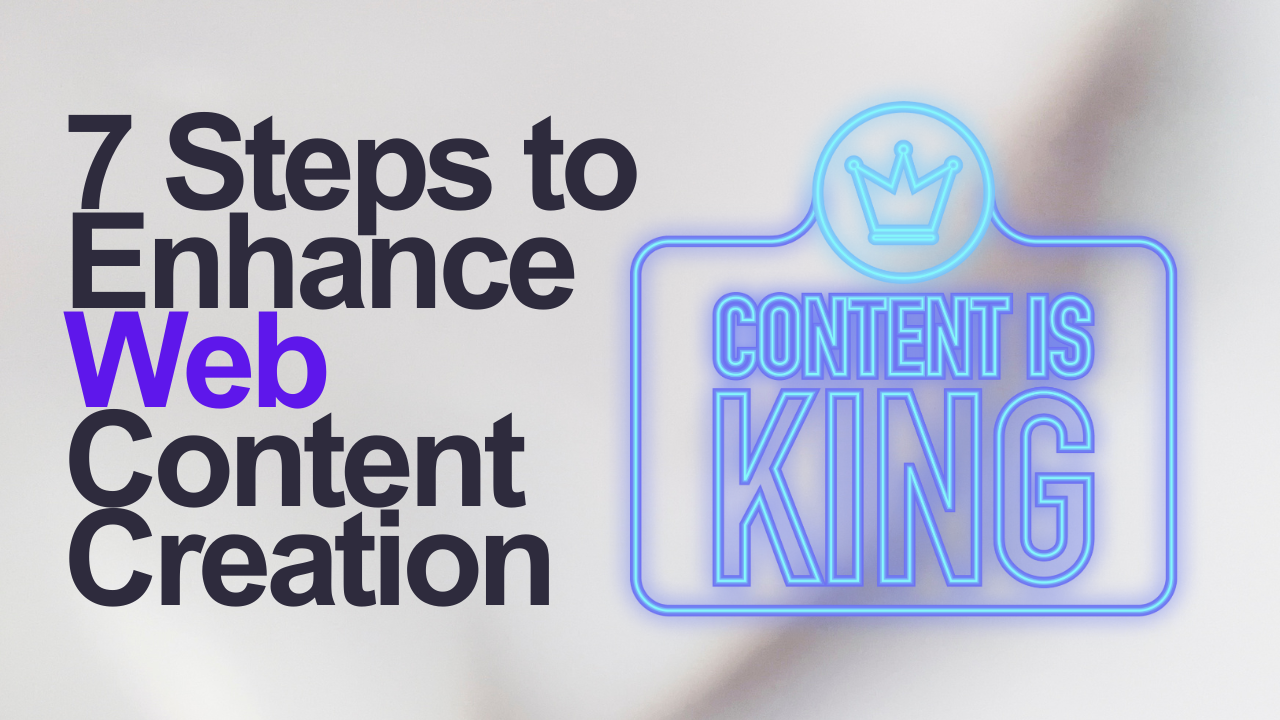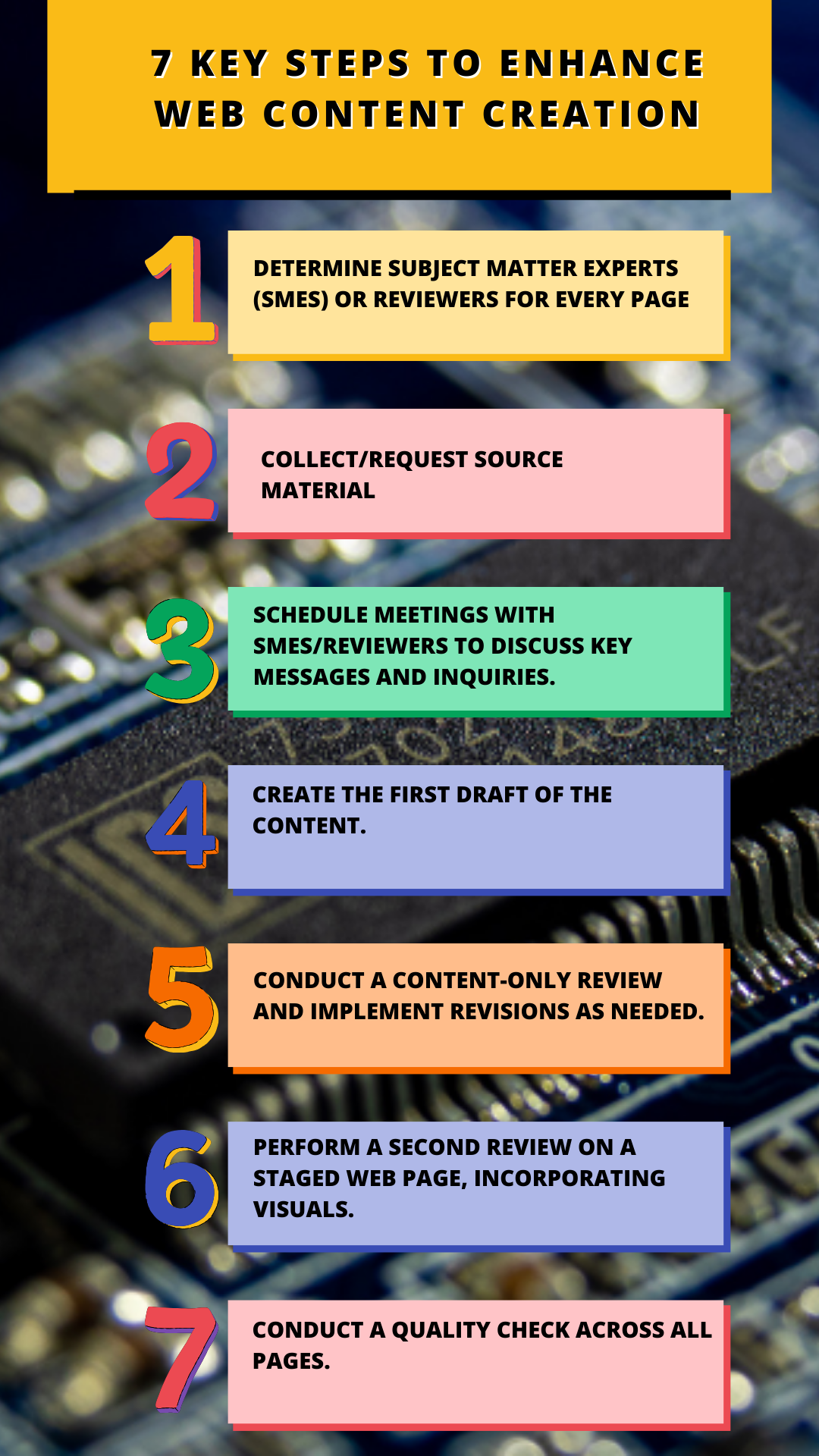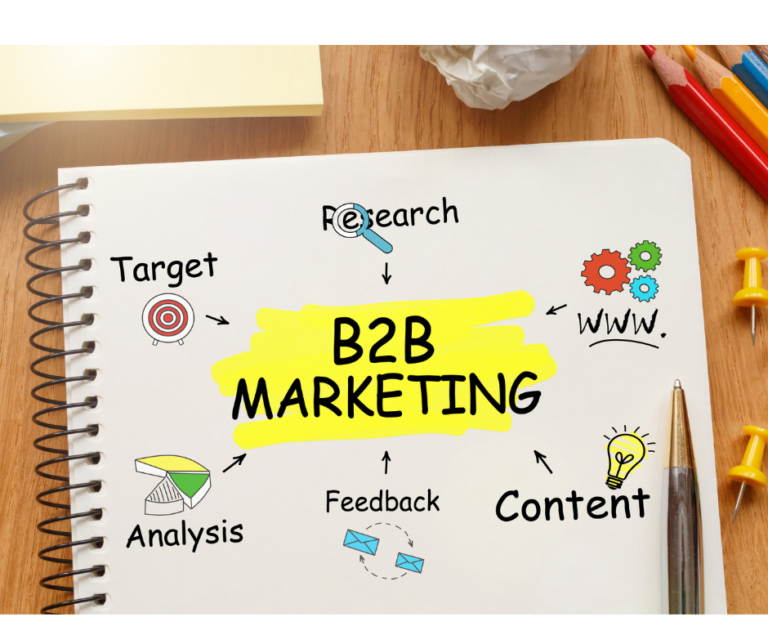
Writing content for the web differs from creating other forms of technical marketing content like white papers, case studies, or blog posts.
Rather than delving deeply into a specific product, technology, or application on a webpage, the goal is to demonstrate your company’s expertise while providing enough information to encourage website visitors to take the next step, such as downloading a technical white paper or case study.
Moreover, as a technical marketing writer for an engineering company, you probably write web content less frequently compared to other types of content. Therefore, when it comes time to undertake a website revamp, the task of developing content may seem daunting. However, rest assured that we’re here to assist you, even if you’re tackling content development alone.
This post outlines our seven-step content development approach, which will aid you in creating concise web content that addresses your personas’ pain points, communicates your company messaging, and accurately showcases your technical expertise.
Let’s delve into each of these steps in more detail, along with some best practices developed by our web writing experts through their experience working on numerous websites over the past few years.

Determine Subject Matter Experts (SMEs) or Reviewers for Every Page
Before delving into the actual writing process, we recommend following three essential steps to optimize your workflow and streamline the review process. The first step is to identify the subject matter experts (SMEs) for EACH page, including corporate pages. It’s crucial to recognize that SMEs for corporate pages may differ from those for product or service pages. For instance, while an engineer may contribute to product or service page content, a human resources representative would likely be more suitable for the careers page.
Additionally, it’s essential to determine if there will be additional reviewers beyond the SMEs for each page at this stage. This early identification is vital because it ensures that reviewers are aligned with your web strategy and page goals. When reviewers are involved at the last minute without prior engagement in strategy development, there’s often a risk of requested changes that may not align with the initially established page goals with your SMEs.
Furthermore, it’s crucial to identify a “web champion” upfront, especially when multiple individuals are involved in web content development. This designated individual serves as the central point of contact for the entire web project and is responsible for ensuring messaging consistency across pages as the content comes together.
Collect/Request Source Material
Next, you’ll need to collect source material from both existing web and non-web sources. This should encompass any information discovered during the pre-web project content audit, materials supplied by your SMEs, and any findings sourced independently from internal and external resources.
Schedule meetings with SMEs/reviewers to discuss key messages and inquiries.
It’s improbable that the source material will suffice for drafting every page. For many pages, you’ll likely need to arrange meetings with the SMEs (and page reviewers) to address any questions and establish the key messages for the page. Depending on the number of unanswered questions and the complexity of gaining alignment on key messages, you might opt for email discussions instead of in-person or Zoom meetings. Regardless of the format, ensure that by the end of this step, all questions are resolved, and everyone is in agreement regarding the key messages for each page, particularly your core product, service, and corporate pages.
Create the first draft of the content.
Now that you have identified your SMEs, gathered source content, and identified key messages, it’s time to begin writing your content. However, before you start writing, you need to make a key decision about how you will draft your content. You can either write in content docs or directly on a draft version of the page.
At AVO Engineering, we typically opt to write the content in a content doc to facilitate tracking edits during step 5. However, we also find it beneficial to transfer the content into a draft page to allow reviewers to visualize the page layout. If you decide to use draft pages at this stage, please use placeholder images, as the imagery will be refined as the content is finalized. Although this process may take a bit longer, we believe it ultimately saves significant time by minimizing rewrites and revisions once reviewers view the content within the layout.
Conduct a content-only review and implement revisions as needed.
After completing your initial draft, it’s time for the content-only review stage! Depending on the page type and number of reviewers involved, you can choose to distribute the Word documents for individual feedback or opt for a group feedback session, especially if there are multiple stakeholders. Additionally, this is the opportune time to initiate discussions regarding imagery selection.
Perform a second review on a staged web page, incorporating visuals.
After integrating the revisions from the initial review, it’s time for the second review. This review should be conducted on a draft page since minimal text adjustments are anticipated. Additionally, this stage allows for refining the text for search engine optimization and selecting imagery and videos to complement the written content. It’s also essential to discuss the next steps for each page during this phase to ensure that every page includes a call to action, even if it’s just a contact link, to engage website viewers effectively.
Conduct a quality check across all pages.
As previously mentioned, it’s possible to have multiple contributors working on different pages, and that’s perfectly fine. However, it’s essential to designate one person, your “web champion,” responsible for gathering and reviewing all the content to guarantee consistency in messaging across pages.
AVO Engineering is committed to connecting with engineering and technical audiences through various marketing initiatives. Reach out to us today to discover more about our comprehensive range of services.






